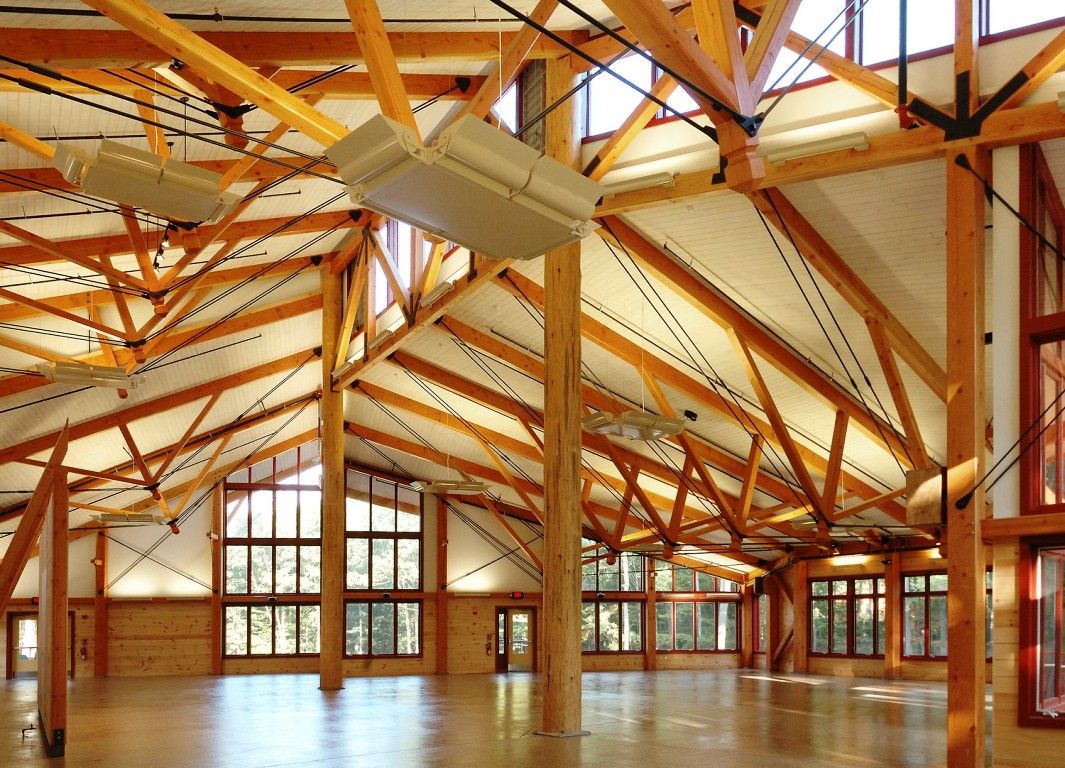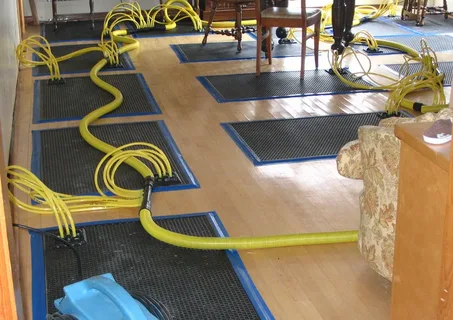Structural drying Sydney uses specialised equipment to dry out areas and structures affected by water damage quickly. This process helps reduce the potential for further damage to the design, saving time and money in the long run. This blog post’ll explore the science behind structural drying Sydney and explain how the process works. Read on to learn more about the science of structural drying Sydney!
What is Structural Drying?
Structural drying is a specialised process used to remove excess moisture and restore the integrity of a building’s structure after water damage. When a property experiences water damage, whether from a burst pipe, a leaking roof, or a natural disaster, the moisture can penetrate the building’s walls, floors, and other structural components. This moisture can lead to mould growth and compromise the structure’s strength and stability. Structural drying involves using advanced equipment and techniques to remove moisture and dry out the affected areas effectively. This process requires a thorough assessment of the extent of the water damage and the developing of a strategic drying plan. The drying process typically involves using specialised air movers, dehumidifiers, and moisture meters to extract the moisture from the building materials. Structural drying eliminates excess moisture and restores the building to its pre-damaged condition. It is a crucial step in the water damage restoration process and is essential in preventing further damage and mould or mildew development. Structural drying requires the expertise and experience of professionals trained in the proper techniques and access to the necessary equipment. By hiring a professional structural drying service in Sydney, you can ensure that your property is thoroughly dried and restored, minimising the risk of further damage and promoting a safe and healthy living environment.
Understanding Water Damage
Water damage can occur in various ways, such as flooding, burst pipes, or even leaking roofs. Understanding the extent of water damage and its potential consequences is essential. Water damage can affect both the structure of a building and the contents within it. Water infiltrating a facility can weaken the foundation, cause wood to rot, and lead to mould growth. Additionally, water can damage electrical systems, appliances, and furniture. One of the main concerns with water damage is its potential health risks. Standing water can become a breeding ground for bacteria and mould, leading to respiratory issues and allergic reactions. Therefore, it is crucial to address water damage promptly to prevent further damage and potential health hazards. By understanding the implications of water damage, property owners can take the necessary steps to mitigate its effects. Structural drying is vital to this process as it removes moisture from affected areas, preventing further damage and promoting a healthy living environment.
The Importance of Structural Drying
Structural drying is an essential step in restoration after water damage occurs. It is crucial in preventing further damage and reducing the risk of mould growth and other potential issues. When water infiltrates a structure, it can seep into the walls, floors, and other porous materials. This moisture creates an ideal environment for mould and bacteria to thrive, leading to potential health hazards and structural damage. By quickly implementing structural drying techniques, professionals can effectively remove moisture from affected areas, preventing these problems from occurring. This process typically involves using specialised equipment such as dehumidifiers, air movers, and moisture meters to dry the structure thoroughly. Not only does structural drying prevent mould growth, but it also helps to salvage materials that may have otherwise needed to be replaced. Drying the structure efficiently and effectively can significantly reduce the restoration cost and minimise the disruption caused by the water damage. Furthermore, structural drying is essential for ensuring the structural integrity of the building. Excessive moisture can weaken the structure, leading to potential collapse or further damage over time. By removing the humidity promptly, structural drying helps to maintain the stability and safety of the building.
The Process of Structural Drying Sydney
Structural drying is a crucial step in mitigating water damage and restoring the integrity of a building. The process involves removing excess moisture from structural components such as walls, floors, and ceilings. Professional structural drying services are in high demand in Sydney, where water damage from floods or plumbing leaks is a common issue. The process begins with a thorough assessment of the affected area by certified technicians. They identify the water damage source and assess the moisture intrusion’s extent. This step is essential to develop an effective drying plan tailored to the specific needs of the building. Next, the technicians use specialised equipment such as moisture meters and thermal imaging cameras to detect hidden moisture pockets within the structure. This ensures that no area is overlooked during the drying process. Once all the affected areas are identified, the technicians use industrial-grade air movers and dehumidifiers to promote airflow and accelerate moisture evaporation. These machines are strategically placed to optimise drying efficiency. During drying, technicians continuously monitor the moisture levels in the affected areas using moisture meters. This allows them to track the drying progress and adjust the equipment placement or drying strategy. Once the moisture levels reach the desired target, the technicians conduct a final assessment to ensure the structure is completely dry and free from residual moisture. This step is crucial to prevent mold growth and further damage to the building. 
Types of Equipment Used in Structural Drying
Professionals in Sydney utilise various equipment designed to carry out structural drying effectively. These specialised tools and machinery are crucial in extracting moisture from the affected area, preventing further damage, and restoring the structure to its pre-water damage condition.
- Air Movers: These high-powered fans circulate air and create airflow, helping speed up the evaporation process. Air movers come in different sizes and designs, allowing professionals to customise their placement for maximum efficiency.
- Dehumidifiers: Dehumidifiers work by removing excess moisture from the air. They extract water vapour and collect it in a container or drain it directly outside. These devices are essential in preventing the growth of mould and mildew, as they maintain the optimal humidity level during the drying process.
- Moisture Meters: These handheld devices measure the moisture content in different materials, such as walls, floors, and ceilings. Moisture meters help professionals identify the extent of water damage and monitor the progress of the drying process.
- Thermal Imaging Cameras: These cameras detect hidden moisture within the structure by capturing infrared images. By identifying areas with higher temperatures, professionals can pinpoint and address hidden moisture pockets accordingly.
- Water Extraction Equipment: Depending on the severity of the water damage, professionals may use specialised pumps and extractors to remove standing water. This equipment is crucial in preventing further damage and reducing drying time.
By utilising these advanced tools and equipment, professionals can effectively and efficiently dry structures in Sydney. Hiring experienced professionals with access to and expertise in using the appropriate equipment is important to ensure the best possible outcome for your property.
Techniques Used in Structural Drying
Professionals use various techniques for structural drying to remove moisture and restore the affected area effectively. These techniques are crucial in ensuring that the structure is thoroughly dried and free from any potential issues from lingering smoke. One commonly used technique in structural drying is air movers or fans. These powerful fans are strategically placed to create air circulation and promote evaporation. By directing the airflow towards the affected areas, the fans help to speed up the drying process and prevent further damage. Another technique is the use of dehumidifiers. These machines extract excess moisture from the air, thereby reducing humidity levels. Dehumidifiers play a significant role in preventing mould growth and reducing the risk of structural damage. Professionals may also employ specialised drying equipment, such as thermal imaging cameras. These cameras identify hidden moisture areas within the structure, allowing for targeted drying efforts. Professionals may sometimes utilise controlled demolition techniques to remove damaged materials that cannot be salvaged. This helps to prevent the spread of moisture and contaminants and allows for a more thorough drying process.
Overall, the techniques used in structural drying are carefully chosen based on the extent of water damage and the structure’s specific needs. By combining these techniques, professionals can effectively restore the affected area and prevent further issues.
Conclusion
In conclusion, structural drying is crucial in restoring properties affected by water damage in Sydney. It is essential to understand the science behind structural drying to fully grasp its significance in preventing further damage and preserving the integrity of the building. Water damage can have severe consequences, such as mold growth, structural weakening, and health hazards. Structural drying eliminates excess moisture from affected areas, preventing these potential problems. The process of structural drying in Sydney involves the use of specialized equipment and techniques. Powerful dehumidifiers and air movers extract moisture from the air and surfaces, while thermal imaging technology helps identify hidden pockets of water. Various techniques, such as creating a controlled drying environment and employing moisture mapping, are also utilized to ensure thorough drying and prevent secondary damage. Property owners can make informed decisions about their restoration needs by understanding the science and process of structural drying. It is important to consult with professionals with expertise and experience in structural drying to address water damage issues effectively. Overall, structural drying plays a vital role in mitigating the effects of water damage and preserving the structural integrity of properties in Sydney. By employing the appropriate equipment and techniques, professionals can successfully restore affected areas, ensuring a safe and healthy environment for occupants.
| Other Good Articles to Read |
| Skank Blogs |
| Unreal Blogs |
| Tba Blogs |
| All City Forums |
| Dany Blogs |
| Refuge Blogs |
| The Music Blogs |
| Key Forums |
| The Big Blog Theory |
| Joe Blogs |
| Blogs 4 Me |
| Blogs Emon |



